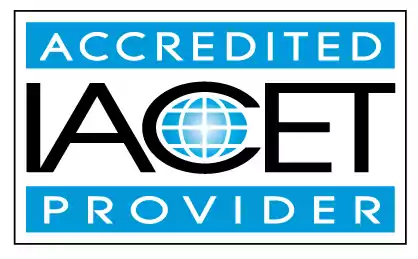Describe the types of emergency response and situations that warrant each response.
Learn about different types of emergency response and the situations that require each response. Find proper procedures to handle various emergency situations. Discover essential information on emergency preparedness and response in early childhood education and child care centers.Trainings incorporating this outcome
Proficiency Level
Target Audience
Price
States
Alabama (1) Alaska (1) Alberta (1) Arizona (1) Arkansas (1) Australia (1) California (1) Colorado (1) Connecticut (1) Delaware (1) District of Columbia (1) Florida (1) Georgia (1) Hawaii (1) Idaho (1) Indiana (1) Iowa (1) Kansas (1) Louisiana (1) Maine (1) Maryland (1) Massachusetts (1) Michigan (1) Minnesota (1) Mississippi (1) Montana (1) Nebraska (1) New Hampshire (1) New Mexico (1) Newfoundland and Labrador (1) North Dakota (1) Nova Scotia (1) Ohio (1) Oklahoma (1) Oregon (1) Pennsylvania (1) Prince Edward Island (1) Puerto Rico (1) Quebec (1) Rhode Island (1) Saskatchewan (1) South Carolina (1) South Dakota (1) Texas (1) Utah (1) Vermont (1) Virgin Islands (1) Virginia (1) Washington (1) West Virginia (1) Wisconsin (1)
6 hours courses
Related Outcomes
- Describe how to effectively respond to emergency situations
- Describe what and how to respond to the following emergency situations: loss of water, serious injury, loss/death of child, etc.
- Demonstrate an understanding of creating a successful block center by identifying the various types of blocks, describing an effective block center setup, and recognizing the various stages of block play.
- Demonstrate understanding of the components of a plan to respond to emergency situations
- Describe the components of emergency preparedness in the child care setting.
- Describe emerging literacy skills in young children.
- Identify safety considerations for building, physical premises, and transportation and plan for emergency response.
- Define what is an emergency and the legal requirements for emergency preparedness for child care professionals.
- Describe the components of an emergency preparedness plan for child care facilities
- Identify the different types of portfolios used in child care programs, and the appropriate portfolio components for each type.
- Describe additional provisions to the emergency preparedness plan
- Define Emergency Preparedness and Response Planning
- Describe ways to maintain communication and ensure preparedness during emergencies
- Describe procedures for communication and preparation during an emergency.
- Describe the appropriate response for natural disasters and other events.
- Describe ways to analyze classrooms for an anti-bias approach.
- Describe how language is one of the many ways through which culture affects development.
- Demonstrate appropriate/effective responses as they relate to a variety of typical child care scenarios.
- Describe the primary learning centers and their components.
- Demonstrate understanding of children's general knowledge that supports emerging math skills
Related Articles
- Save Lives With Skill: CPR Training
- Emergency Preparedness in Childcare: Creating and Practicing Safety Protocols
- Every Childcare Provider Must Be Trained in Basic Health & Safety
- Emergency Preparedness Training Every Childcare Provider MUST Know
- Why Every Childcare Worker Needs This CPR & First Aid Training
- The Shocking Truth About Medication in Childcare
- CPR and First Aid Training for Child Care Providers: Essential Skills for Emergencies
- Why Basic Health and Safety Training Is Crucial for Child Educators
- Top Medication Administration Training Certification Courses You Need to Know About
- Emergency Preparedness Training for Childcare Providers: Keeping Kids Safe in a Crisis
- The Ultimate Guide to Medication Administration Training for Child Care Providers
- Basic Health and Safety Training: Essential Skills Every Preschool Teacher Needs
- Medical Administration Training for Child Care: Where to Get It.
- Medical Administration Training for Childcare Staff: More Than Just a Requirement
- From Band-Aids to EpiPens: Medical Administration Training in ECE
- From Tornadoes to Lockdowns: Prepare Your Childcare Center for the Unexpected
- When Seconds Count: Real-Life Cases Where Health & Safety Training Saved Lives
- 🚨Ready for Anything: Every Childcare Provider Needs Emergency and Disaster Preparedness Training
- Critical Skills for Childcare Professionals: Health, Safety, and Emergency Preparedness Training
- California Emergency Preparedness Online
 0.6 CEUs
0.6 CEUs